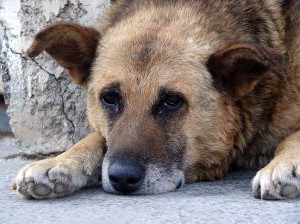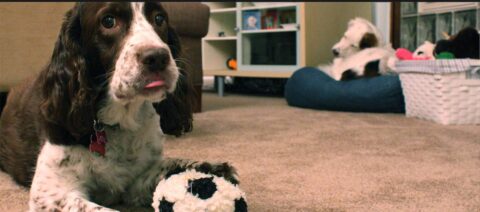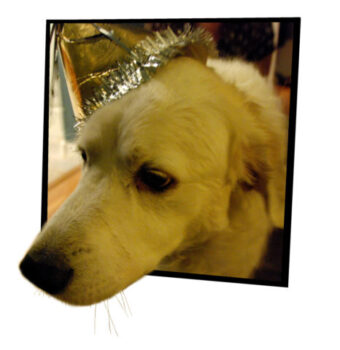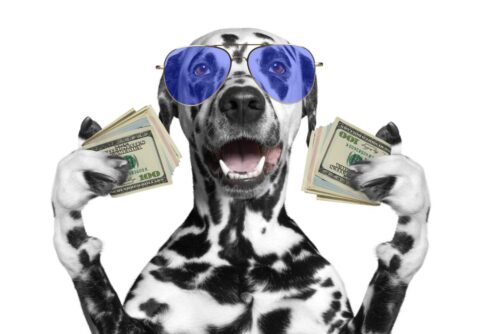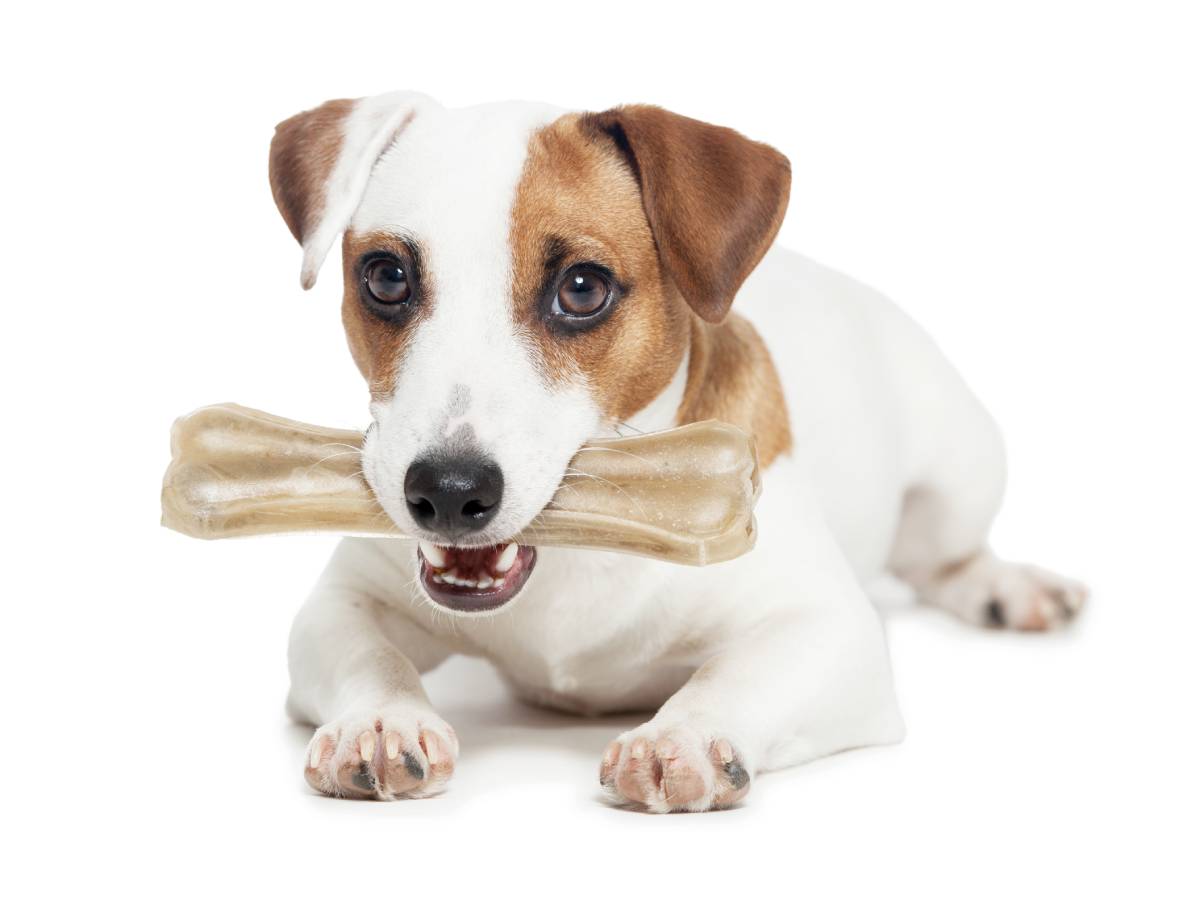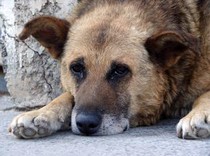 As the Senior years go by and the Geriatric years approach, we dog owners need to add a few more things to the list of what to watch for and do, in order to help our aging — yet still very lovable — companions get as much out of life as possible.
As the Senior years go by and the Geriatric years approach, we dog owners need to add a few more things to the list of what to watch for and do, in order to help our aging — yet still very lovable — companions get as much out of life as possible.
Here are some Senior dog health issues to look for, plus some changes to make to your daily routine when you have an older dog…
First Signs Of Aging
One of the first things you’ll probably notice is your dog slowing down even more.
He’ll probably be sleeping more, and won’t want to play or take a walk as often as usual. He may have some trouble getting up after lying down.
It’s really important to keep up with your vet visits at this stage. If the trouble is arthritis, or something less obvious, your vet may be able to help with some meds that help dogs with arthritis and could make a remarkable difference.
To help with his balance, be alert to the length of your dog’s nails and the condition of his feet. Make sure you keep his nails in good shape, and you can even help improve traction on slippery floors by keeping the hair that grows between his pads clipped. Active dogs keep this worn away, but you’ll see it sprout as he becomes more interested in long naps under a sunny window rather than chasing a ball in the backyard.
Senior Dog Teeth Issues

How are your dog’s teeth? Periodontal disease is extremely common in older dogs and can be painful and detrimental to his overall health, as the bacteria will eventually invade his system. This can even affect his organs — not good!
The best remedy is to start a good dental hygiene program of brushing when your dog is a little puppy. (Doggie toothpaste only, please! It’s okay for dogs to swallow.) If you haven’t been brushing, then start now. There are dog toothbrushes, as well as “finger” brushes and dental wipes that might work better with older dogs. Daily tooth brushing is best, but brushing your dog’s teeth 2-3 times a week will help a bunch.
Here are some good tips for brushing your dog’s teeth, plus a video showing how to brush your dog’s teeth.
At this age, it’s probably not a great idea to have the vet do the thorough dental cleaning that requires anesthesia (which can be risky), unless your vet thinks it’s really necessary. My vet offers a 5-day, once-a-month round of antibiotics as an alternative to cleaning for older dogs, and in my experience it does help.
Bathing & Brushing An Older Dog
Routine bathing and brushing have always seemed to benefit my older dogs. I don’t know about your dog(s), but all of mine over the years — young or old — have always acted friskier and really happy after a nice warm bath. Maybe they’re just glad it’s over and they’re out of the tub! But I think they do feel better.
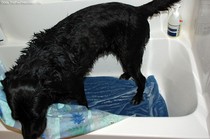 Itchy skin is soothed, circulation is stimulated, and all that attention — what’s not to like? But no cold hose in the backyard for your older dog (any dog, in my opinion). Instead, use warm water in a warm room, and be sure to use a non-skid bath mat in the tub.
Itchy skin is soothed, circulation is stimulated, and all that attention — what’s not to like? But no cold hose in the backyard for your older dog (any dog, in my opinion). Instead, use warm water in a warm room, and be sure to use a non-skid bath mat in the tub.
Plus, you should only use a dog shampoo that’s specially formulated for dogs, in order to protect his skin. Rinse well, and dry as thoroughly as you can with lots of towels. Avoid using a blow dryer, as this will only dry out his skin (plus, no dog I know likes it — the noise stresses them out).
Finally, after drying him off, park him in a warm spot lined with towels, and cover him with more dry towels. This will bring up your dog’s body heat and he’ll dry pretty quickly.
If bathing becomes difficult, or your dog is just too large to get in and out of the tub without more help than you can give him, then simply brush your dog m
ore often. Chances are, he won’t need so many baths as he ages anyway — especially if he’s an indoor dog and not slogging through mud or rolling in…well, never mind.
There are also doggie bath wipes available at most pet stores, and these do a great job for spot cleaning and deodorizing.
Housebreaking Issues With Older Dogs
Just like older people, older dogs have to visit the bathroom more frequently, so try to take your dog out more often, and don’t hesitate whenever he tells you he needs to go. If he doesn’t quite make it, he probably can’t help it.
When we had 3 geriatric dogs at one time, I invested in an upright rug cleaner; it cost about $130 and was worth every penny! It quickly vacuumed up any puddles and deep cleaned the carpet far better than I could do by hand; no odors, no yucky towels to launder. There are many makes & models available for various prices. Bissell makes a handheld “Little Green” machine made especially for spot cleanups. It sells for less than $90 at Wal-Mart.
Aging Dog Vet Care
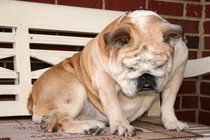
While seeking veterinary care is even more important now, it may be difficult to get your older dog in and out of the car — especially if he’s large and can’t get into the car easily on his own. You might consider a dog ramp to make the process easier on your senior pet.
Or, ask your vet if he’ll make an occasional house call. Some will. You can also check your local directory for a Mobile Vet. The one I know is fantastic — she drives a huge van, which is set up just like an examining room, complete with meds, cages, and more. Usually she just comes into the house and does whatever is needed right there. This is so much less stressful on the pet (and you!) to be in familiar surroundings.
So take good care of your elder dog, give him lots of attention, and you’ll be rewarded many times over with the affection and companionship of your best friend well into his sunset years. Simply knowing that you’ve helped him live as long and healthy as possible is a very good feeling!
RELATED:
- Dental Disease In Dogs – photos & what to look for
- Recommended Senior Dog Foods – for older dogs with arthritis
- Tips On Caring For Older Dogs – how to accommodate your dog’s personal & emotional needs as he ages
- Older Dog Sleep Issues – some of the things that an older dog’s sleep issues could signal
- Handling The Problems Of Old Age In Your Dog – basic challenges & solutions
Our current dog family consists of 2 Beagle-mix sisters, Susie and Fluffy. Over the last 35 years I’ve had anywhere from 1 to 6 dogs at a time, so I definitely have tons of dog and puppy stories to share! By the way, our dogs are going on 2 years straight with absolutely NO commercial pet food or dog treats. I like to make my own food and treats for my dogs.
